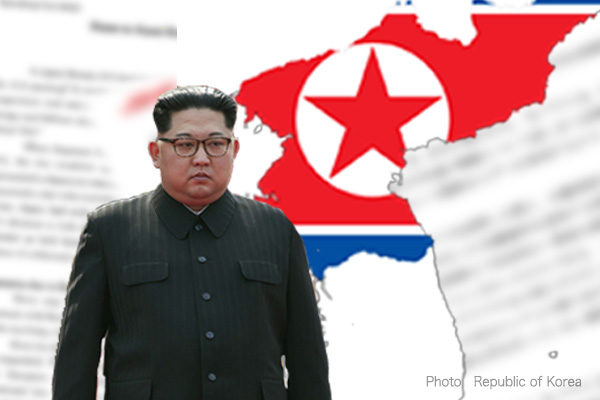Military tensions over nuclear weapons are rapidly growing on the Korean Peninsula, although such tensions are scarcely reported in Japan. As North Korea continues military drills for potential nuclear attacks on the United States, South Korea and Japan, the three countries repeatedly conduct military exercises to check North Korea. As a result, confidence in the U.S. nuclear umbrella has lowered in South Korea, with calls growing for its own nuclearization.
Repeated drills for nuclear attacks on U.S., South Korea
On February 18, North Korea launched a Hwasong-15 intercontinental ballistic missile (ICBM) and announced the launch as a firing drill conducted by an ICBM unit of the Korean People’s Army Missile General Bureau. Last November’s launch of a Hwasong-17 ICBM was described as a test-firing by the Academy of National Defense Science, indicating that the ICBM was still under development. But that the Hwasong-15 was fired by an operational KPA unit indicates it has already been operationally deployed. The firing thus represented a mock nuclear attack on the United States.
On February 19, U.S. Air Force B-1B bombers and F-16 fighters performed a joint drill with F-15 fighters of the Japanese Air Self-Defense Force over the Sea of Japan, and with South Korean F-35A and F-15K fighters in the South Korean air-defense identification zone respectively.
On February 20, North Korea launched short-range ballistic missiles towards the Sea of Japan and announced that the launch was a firing drill by a tactical nuclear operation unit. This means that North Korea conducted a mock nuclear attack on South Korea. On the same day, Kim Yo Jong, the younger sister of North Korean leader Kim Jong Un, harshly criticized South Korean experts for claiming the Hwasong-15 failed to reenter the atmosphere. “If the warhead failed to reenter the atmosphere, it would have been unable to send signals until its landing,” the de facto No. 2 North Korean leader said, emphasizing the missile’s successful flight.
On February 22, the United States and South Korea conducted a joint table-top exercise at the Pentagon under the assumption of North Korean nuclear attacks. The exercise was a mock U.S. nuclear retaliation. On the same day, Japanese, U.S. and South Korean Aegis destroyers performed a joint ballistic missile defense drill in the Sea of Japan. Aegis destroyers are capable of intercepting North Korean nuclear missiles. Participating in the joint drill were Japan’s Atago, the United States’ Barry and South Korea’s Sejong the Great.
On February 23, North Korea fired cruise missiles and announced that the firing came in an exercise by a strategic cruise missile unit, an important part of its nuclear deterrence, to demonstrate the war posture of North Korea’s nuclear combat force.
Growing argument for a nuclear-armed South Korea
South Korea is enhancing a sense of crisis. On January 11, President Yoon Suk Yeol said that if the North Korean nuclear issue became more serious, the South could have tactical nuclear weapons deployed on its land or possess its own nuclear weapons. Since then, the situation has clearly become more serious.
The Chosun Ilbo, a major South Korean daily, carried an editorial on February 20 on North Korea’s ICBM operational deployment and South Korean options. The editorial cited the Hwasong-15 ICBM’s suspected successful reentry into the atmosphere and concluded that South Korea would have to possess its own nuclear weapons to annihilate the utility of North Korean nukes. Any other options could become meaningless soon, it warned.
North Korea has continued nuclear weapon development since just after the 1953 Korean Armistice Agreement, seeking to have nuclear missiles reaching the U.S. mainland to impede U.S. military intervention and win a second Korean war. North Korea’s founding father Kim Il Sung’s ambition has been almost realized by his grandson, Kim Jong Un. Why does not Japan squarely look at the present danger.
Tsutomu Nishioka is a senior fellow and a Planning Committee member at the Japan Institute for National Fundamentals and a visiting professor at Reitaku University. He covers South and North Koreas.


